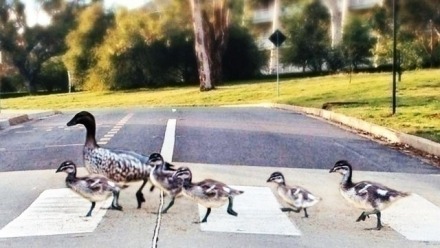1914: A Monument to Drought

 In April, cereal farmers in south-eastern Australia look to the sky, look to the soil and prepare to sow. One hundred years ago, in 1914, after a dry spring and summer, rain fell in April giving farmers the confidence to sow. Across the Australian wheat-belt farmers committed themselves to another years’ cycle, not realising that southern Australia was six months into one of the driest periods on record. As 1914 progressed, rainfall ceased and did not return; the ground became drier, vegetation withered and confidence evaporated with the moisture.
In April, cereal farmers in south-eastern Australia look to the sky, look to the soil and prepare to sow. One hundred years ago, in 1914, after a dry spring and summer, rain fell in April giving farmers the confidence to sow. Across the Australian wheat-belt farmers committed themselves to another years’ cycle, not realising that southern Australia was six months into one of the driest periods on record. As 1914 progressed, rainfall ceased and did not return; the ground became drier, vegetation withered and confidence evaporated with the moisture.
1914 is a forgotten drought, overshadowed by the longevity of its predecessor, the federation drought, and by the subsequent catastrophe of World War One. And yet the thirteen months from April 1914 to May 1915 remain one of the most severe drought periods in the history of southern Australia. Meteorologists now identify 1914-1915 as a strong ‘El Nino’ event in which cooler waters in the western Pacific Ocean led to decreased rainfall in southern Australia. The drought was particularly severe in Victoria, southern South Australia, central New South Wales, Tasmania and south-western Western Australia. At the end of the year the wheat harvest was only one quarter of what it had been the previous year.
Murrayville in the heart of the south-eastern wheat belt, on the border between Victoria and South Australia, received only 113 mm of rain in 1914. This is a third of the rainfall the town would normally receive. This amount of rain is what we expect in the driest part of central Australia at Oodnadatta, rather than in the wheat belt. Throughout wheat growing areas people searched for water sources. Along the Murray River, communities constructed levee banks to conserve water for their own use (but at expense of those further downstream) and reduced the river to a series of stagnant pools. The local and state governments brought water by train to town dams and in South Australia and western Victoria they sank bores for communal use.
Mary Olive Cornell and her family had recently settled near Murrayville when the 1914 drought began to bite. Like other cereal farmers in the Mallee, the Cornell family had sown their wheat after rain in April. However, it was particularly dry between May and October, when the wheat should have been growing. The family harvested nothing that year. Mary recalled that year as very quiet: ‘no hum of voices calling to the teams; no cracking of the whips; no buzzing of the reaper and winnower and no dust from the teams along the road; no life whatever; peaceful perhaps but most strange’. She also remembers the year as remarkably beautiful: ‘Very often in the evenings the colouring was aurora-like in its beauty… the sunrises and sunsets were splendid but extra grand during drought’
The Cornell family lived on flour, rabbits, dripping and paddock melons for fruit pies and they were proud that they did not need the government sustenance supplied to many farmers that year. However they did receive government assistance to improve their block and make farming viable by creating a water source. The State government paid for the sinking of a 300 feet bore on the Cornell farm and erection of a windmill to pump the bore water. This procured a supply of clean water for the house and farm. This windmill remained a symbol of abundance in the midst of drought. ‘We always called our windmill “A Monument to Drought”’ wrote Mary Cornell.
Mary Olive Cornell’s account of ‘Drought in the Mallee 1914’ is held in the manuscripts collection of the State Library of Victoria, MS8793. The photograph depicts a recently completed levee bank on the Murray River at Nyah in 1914 (courtesy of Swan Hill Regional Library Local History Collection).
Rebecca Jones is a Postdoctoral Fellow in the School of History at ANU. She is researching ‘Slow Catastrophes: drought resilience amongst farmers and agricultural communities in Australia, 1880s-2000s’ funded by an ARC Discovery Early Career Research Award (DECRA).









